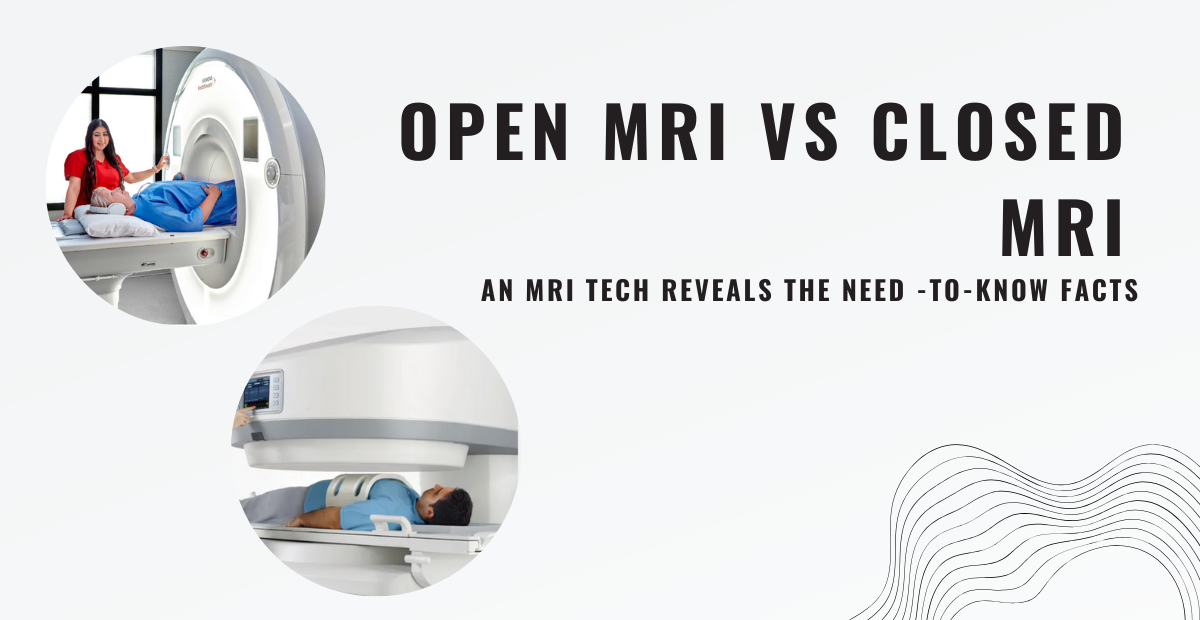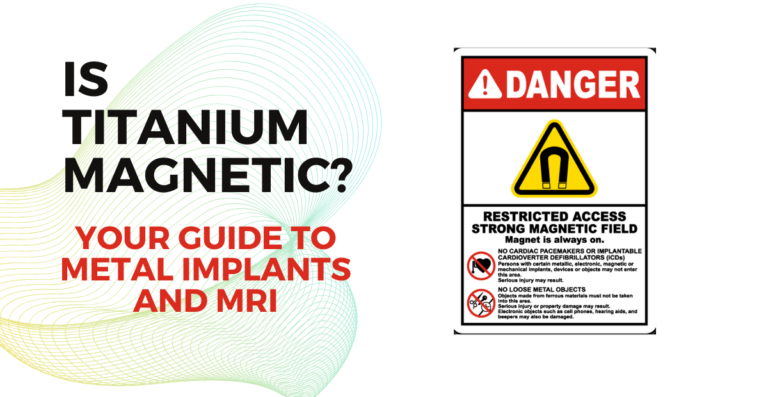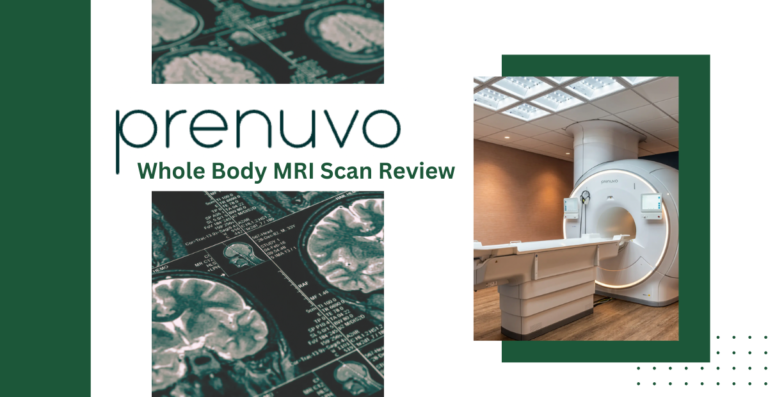Open MRI vs Closed MRI| Expert Reveals All You Need To Know

As an MRI Technologist who has been scanning patients since 2016, I have noticed there seems to be a lot of confusion when it comes to the MRI scanner itself.
If you struggle with feelings of claustrophobia and are wondering what exactly you are getting into with your upcoming MRI appointment, you’re not alone!
A lot of patients I have had seem to think the tube at the back of the scanner is closed.
Fear not, this is false.
In this post I compare open MRI vs closed MRI and how it can impact your scan experience as a patient and the quality of the images.
I also go over how the similarities and differences between these two can impact your anxiety during the scan.
Plus, stay tuned until the end for my top expert tip!
What is an MRI?
MRI is short for “Magnetic Resonance Imaging”. Yes, it is a mouthful.
This diagnostic imaging device uses a strong magnetic field and radiofrequency to create the images.
These images boast high resolution and are excellent for imaging soft tissue.
This means they can evaluate:
- brain
- spinal cord
- discs and bones in your spine
- abdominal organs
- pelvic organs
- joints
- ligaments
- tendons
- muscle
- heart (some locations)
- fetal imaging (some locations)
- whole body screening
Without boring you of the physics, MRIs are known to be loud with long procedure times. Most MRI scans will require you to be in the scanner for at least 30 minutes.
MRI is not great for imaging the lungs.
Open vs Closed MRI- The Quick Comparison
This image from the Cleveland Clinic perfectly depicts open MRI vs closed MRI scanners.
Open MRIs are open on both ends (head to foot) and are open on one side. They are closed on one side, to the left or right of you.
Closed MRIs are closed on both sides, to the left and right. But they are open on either end at the head and foot.
What is an Open MRI?
An open MRI has two big and flat surfaces above and below you, which are joined at one side. This means that there is open space on 3 sides and a closed space on one side.
Dimensions
The typical dimensions for open MRI scanners are:
45 cm vertically– this means there is less space in front of your face than in a closed MRI scanner.
91cm in width– this refers to the width of the bed, which is wider than the width of the largest closed MRI scanner. This means you will have more space left and right of you.
Benefits of Open MRI
- it’s great for people who have problems feeling inclosed to the left and right of them.
- it can accommodate patients who have broader shoulders.
- it may be more comfortable for certain types of scans where difficult positioning is required
Drawbacks of Open MRI
- the image quality may be lower when compared to the open MRI. This is because the wider and shorter tube may affect the uniformity of the magnetic field.
- it may still feel claustrophobic to patients who are uncomfortable with a surface close to their face.
- patients who are larger front to back may not fit in this type of machine
- a lower magnetic field strength of up to 1.2T means lower-quality images.
- the scan may take a bit longer due to the magnetic field not being as uniform. This can add up to 15 minutes to your scan time.
- it may be harder to find a facility with an open MRI in your area
The good news is that open MRIs are becoming more and more common. The quality of the scans is also getting better as technology advances.
What is a Closed MRI?
The term “closed” does not mean the scanner is closed at the back.
It is, in fact, open on both ends. So why is referred to as “closed”?
Picture a giant toilet paper roll, which is a tube with closed sides from left to right, and open on both ends at the head and feet.
These scanners come in two sizes, traditional, and wide bore.
“Bore” is a term that refers to the actual opening of the tube of the scanner. In the MRI world when we say closed, we are referring to a closed bore.
Both traditional and wide-bore MRIs have higher magnet strength and better image quality than an open MRI machine.
Traditional Bore
Traditional bore MRIs are tubes that are smaller in diameter, and longer in length.
A 60cm diameter means there is less space above, below, and beside you.
A 205 cm length means there is more tube at either end when compared to a short bore scanner. This means that your head may be further from an opening.
Due to the longer tube, these MRIs can also appear darker, giving them the illusion that it is closed at the end.
Benefits Of A Traditional Bore MRI
- The smaller and longer tube means the magnetic field is more uniform at the center of the tube. This means better quality images.
- This type of scanner has been used the most and has been around since the invention of MRI. It is tried and true when it comes to image quality.
- It is easy to find a clinic that has this type of scanner and is widely available.
Drawbacks Of A Traditional Bore MRI
- Less space to the left and right, above and below. This means patients with wide shoulders or larger abdomens and chests may not fit.
- Certain scans may be more uncomfortable depending on the set-up required.
- If less space to the left and right of you causes anxiety, this type of scanner may not be for you.
What Scans May Be Uncomfortable On A Traditional Bore?
Due to the smaller size of the tube, if you consider yourself to be a larger patient, I would recommend avoiding the following types of scans on a traditional bore:
- Hand
- Wrist
- Elbow
The reason for avoiding these is that the positioning requires you to be on your stomach with your arm above your head.
Due to the small size of the tube, this means that there is little room left for your head.
I have personally been in a traditional MRI for a wrist scan. I consider myself to be smaller and my head felt quite squished and uncomfortable.
I have also worked on this type of machine and had to turn away many patients as they simply could not fit in this position.
Wide Bore
Like traditional MRIs, wide-bore magnets are still considered closed. The difference is that they have a wider diameter and some have a shorter length.
The diameter of 70cm means there is more room on both sides of you, as well as above you.
If the wide bore is also short, 145cm in length, it means your head will be closer to an opening.
Benefits Of A Wide Bore Scanner
- A larger diameter means less feelings of claustrophobia
- Larger patients can often fit comfortably
- Certain scans that require your arms to be above your head are much more comfortable due to the larger space
Drawbacks of A Wide Bore Scanner
- The magnetic field is not as uniform at the center, meaning scan quality may be less when compared to traditional bore MRI
- scan time may take slightly longer to compensate for the lack of uniformity in the magnetic field
- less common may be more difficult to find a facility that has this type of MRI
Open MRI vs Closed MRI- Which Should You Choose
Open MRI
You should consider booking a clinic with an open MRI if you:
- if being closed to the left and right of you causes claustrophobia
- if you have very wide shoulders
Closed MRI
Scans that require you to be flat on your back in the center of the table are best done in a closed Traditional-Bore MRI.
Also, scans that require higher resolution, or multiple areas may be ideal due to the shorter scan times.
Closed MRI has been around longer than open MRI and is the traditional type of scanner.
These scans can include:
- Head
- Spine and Spinal cord
- Abdomen
- Pelvis
- SI Joints
- Ankles
- Feet
- Knees
Wide-bore scanners are great for all of the same scan types as the Traditional-Bore MRI but may take a bit longer with lower image quality.
The great news is that wide-bore scanners are becoming more common, and the technology is advancing.
They are likely to replace the traditional scanners in the future as the image quality and scan experience improve.
What Other Types of MRI Machines Are There?
There are other MRI scanners available, however, they are less popular due to the lack of image quality.
Upright/Stand-up MRIs
These MRIs allow the patient to either stay seated or stand during their exam.
Benefits
- Great for claustrophobic patients
- Great for patients with limited mobility
- can image body parts when you are weight-bearing. This is especially useful for spines and joints.
Drawback
- uncommon and may be hard to find a clinic that has this type of MRI
- Image quality may be poor. This is caused by the open aspect of the machine, making the magnetic field less poor.
- Limited in the types of body parts it can scan
- A lower magnetic field strength of around 0.6T means lower-quality images.
Extremity MRIs
Benefits
- great for claustrophobic patients
- only your arms and legs go into the machine
- head stays out
- more comfortable scan experience
- may be available for patients with certain metallic implants
Drawbacks
- low magnetic field strength means less detailed imaging
- cannot scan the head, neck, abdomen, pelvis, or spine
- it may be difficult to find a clinic offering this type of MRI, not widely used
How Are MRI Machines Different From CT Scanners?
CT stands for “computed tomography”, also known as a “CAT scan”. These are quite different than MRIs and can be thought of as an XRAY on steroids.
What about the shape of the machine?
If closed MRI machines are like toilet paper rolls, then CT machines can be thought of as donuts.
CTs have such a short length, 27 inches, that it doesn’t feel like you are in a tube. They also have a wider diameter, at 85 cm.
It’s more like a ring than a tube.
My Expert Tip
If you feel that you still have anxiety and uncertainty regarding what type of machine may be best for you, then I highly recommend reaching out to the MRI facility you are considering.
They are the experts when it comes to their MRI scanners.
They may even allow you to come in and view the MRI to get a better idea as to what your scanning experience may look like.
I have worked at several facilities that offer “fit tests”.
We allow patients to come in and try the machine out before booking.
In my experience, this usually results in a successful test. Patients can then prepare mentally for their scan day.
Wrap Up
I hope that by now, you have more clarity regarding what to expect with your upcoming MRI appointment.
Claustrophobia is no joke, and many patients struggle with it.
Many patients I have scanned are confused about exactly what the MRI scanner looks like, how big it is, and if it is closed at the ends.
Now you know that open and closed MRIs are both, in fact, open on both ends. You should also have a better idea of the advantages and disadvantages of open MRI vs closed MRI.
Although the closed MRI may boast a shorter scan time and better-quality pictures, an open MRI is great for those prone to panic attacks and claustrophobia.




